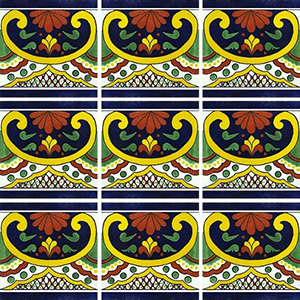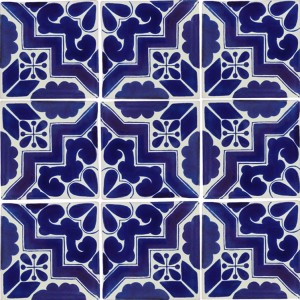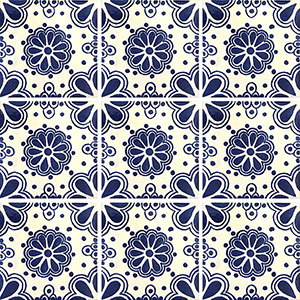The world of interior design knows Talavera pottery as an ornate style of ceramics produced solely in Mexico by proud local 
artisans. These vibrantly colored, handcrafted works of art have been fashioned in the same way for centuries and appreciated for their quality and aesthetics for just as long. So what is it about Mexican Talavera that makes it so special?
As you can imagine, Mexican Talavera has a long and rich history. Named after the Spanish village of Talavera de la Reina, this renowned ceramic art boasts a melting pot of multiculturalism. The Spanish contribution dates back to the invasion of the Moors, who brought their knowledge of ceramics from ancient Egypt and Mesopotamia, and which was later refined by a combination of the Italian Renaissance and artisans from the Orient. Later, Spanish colonists brought their highly refined ceramic skills to Mexico, where they were once again blended with the unique pottery styles of Aztec, Mayan and other indigenous cultures.
It’s not just the history of Mexican Talavera that makes it so desirable. Excellent craftsmanship is a common trademark of Talavera pottery. The process begins by blending together two different clays, then soaking them thoroughly in water to improve pliability. When it’s determined that the clay is ready, having been removed of impurities, it’s then formed into the desired shape by hand, molds or a potter’s wheel. Next, the newly constructed form is left to dry for up to three months. Once the artist has inspected and approved the dried clay, the piece then undergoes the first of two firings. The initial firing turns the clay into a reddish-orange color that is then brightly painted with intricate patterns – a trademark of Talavera ceramics. Afterwards, the pottery is submerged in a special tin-glaze, then fired once more. The final product – what was once an ordinary mound of clay – is now a beautiful work of Talavera art.
Talavera pottery is known for brilliant colors set against a pristine white background. Typically, the vivid patterns are slightly raised, and the entire piece is smoothed over by a glossy sheen. Yellow, green and mauve were traditionally the most prolific colors used to decorate Talavera, although cobalt blue was the most desired. Due to the expensive mineral pigments required for its use, this regal color became a way to identify the finest quality of Talavera ceramics.
Today, Talavera patterns can be simple and bold or elaborate and highly detailed. Floral patterns are perhaps the most common, but when it comes to Mexican Talavera, creativity is limitless. Although some patterns might appear similar, hand-painted Talavera is never identical. This should be no cause for concern, however, as color and pattern themes almost always exist, and the individual character of each piece will only enhance your Talavera collection or home décor. This is especially true if you consider decorating your home with Talavera tile.
One of the most predominant characteristics of colonial Mexican cities, in particular the city of Puebla located in central Mexico, is the beautiful Talavera tiles. In the 17th and 18th centuries, as the production of Talavera pottery continued to grow, striking tile and tile murals began to adorn Mexican churches, buildings, stairways, gardens and homes. These architectural examples splashed color in an otherwise dull stretch of concrete and brought kitchens and bathrooms to life in a way that only Talavera tile could deliver. Now, more than ever, this style continues to be embraced as authentically Mexican.
When it comes to Mexican and southwestern home décor, Talavera pottery and Talavera tile can be an essential part of capturing an authentic design motif. At La Fuente Imports we strive to offer the most outstanding and diverse selection of handcrafted Talavera tiles found anywhere on the web. Also, be sure to browse our exceptional Talavera plates and platters, plus everything else for decorating your home including Talavera vases, canisters, planters and more!



